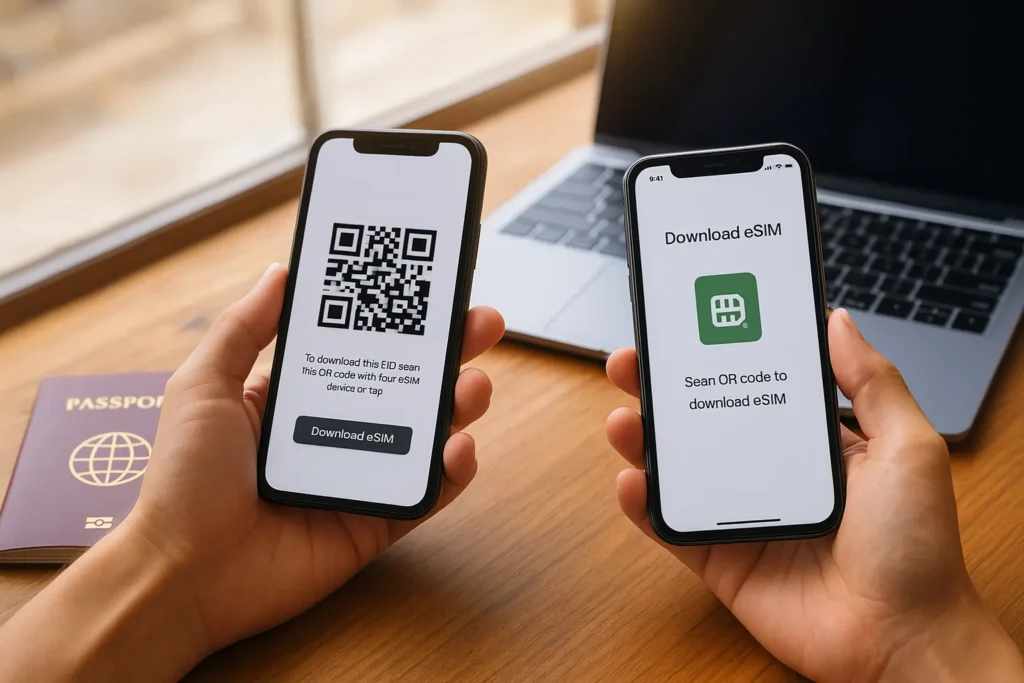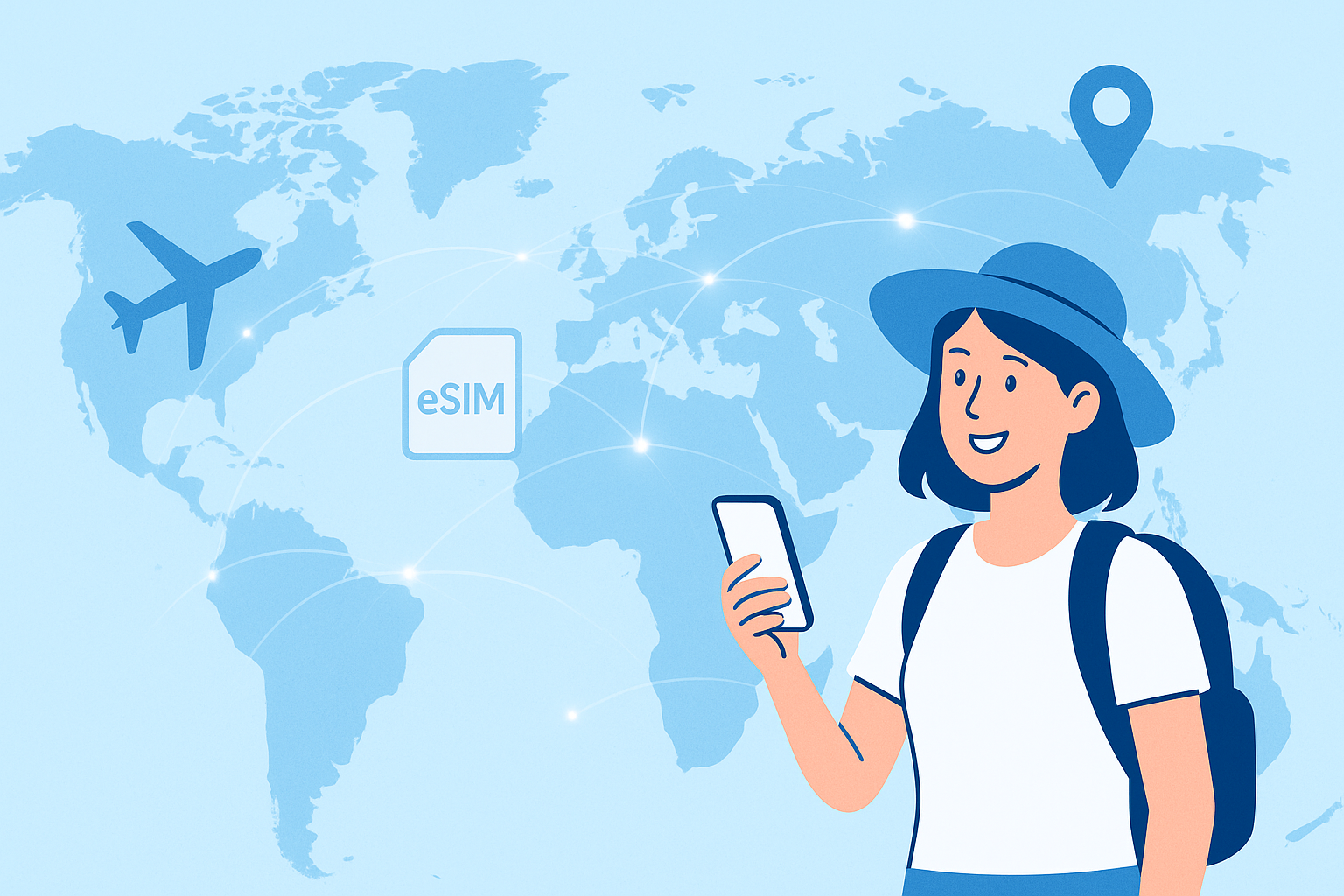
Travelers often wonder if they can use one eSIM across multiple devices—for example, on their phone, tablet, and laptop during a trip. Unlike physical SIM cards, which can be swapped between devices, eSIMs work differently. In this guide, we’ll explain the possibilities, limitations, and smart ways to share your eSIM data across multiple devices.
Can You Share One eSIM Across Multiple Devices?
An eSIM is a digital SIM profile embedded in your device. Most providers lock an eSIM to one device at a time. This means you cannot directly install the same eSIM profile on multiple devices simultaneously. As Android Authority explains, eSIM support across phones, tablets, and wearables is expanding, giving users more flexibility with one subscription. However, there are workarounds to share your eSIM data connection:
- Using a mobile hotspot/tethering
- Installing on a primary device only
- Some providers allow re-downloading an eSIM profile on a new device (rare but possible).
Method 1: Using Hotspot to Share eSIM Data
The most practical way to use an eSIM across multiple devices is by enabling the personal hotspot feature:
- Activate hotspot on your smartphone.
- Connect your tablet, laptop, or other devices via Wi-Fi.
- All connected devices use your eSIM data plan.
💡 Tip: Some eSIM providers restrict hotspot/tethering. Always check terms before purchase.
Method 2: Installing eSIM on Tablet or Secondary Device
Some travelers prefer using an iPad or Android tablet with eSIM for work or streaming. Here’s how to do it:
- Install the eSIM on your tablet.
- Connect your phone/laptop to the tablet hotspot.
- Manage data usage through tablet settings.
This method works well if you need a larger screen for remote work.
Method 3: Dual-SIM and eSIM Transfer
If your phone supports dual SIM (physical + eSIM):
- Keep your primary SIM for calls.
- Use your eSIM only for data.
- Share internet across multiple devices via hotspot.
Transferring an eSIM:
- Some carriers (like Apple’s Quick Transfer or Google’s eSIM transfer tools) allow moving your eSIM to a new device.
- This is not the same as using one eSIM on multiple devices at once, but it helps when upgrading phones mid-trip.
When You Cannot Use eSIM Across Multiple Devices
- Same eSIM QR code cannot be reused multiple times.
- Some providers lock eSIM to IMEI—it won’t activate on another device.
- Hotspot may be disabled on certain low-cost data plans.
Always check the fine print of your eSIM provider to avoid surprises.
Alternatives for Multi-Device eSIM Usage

If you’re a frequent traveler with multiple gadgets, consider:
- Portable Wi-Fi routers (with eSIM support) – Some new routers accept eSIM profiles and can connect up to 10+ devices.
- Separate eSIMs for different devices – Many providers offer cheap regional plans, so buying two may be easier.
- VoIP apps (WhatsApp, Skype, Google Voice) – Use them across devices while only one device runs the eSIM.
Practical Use Case: Business Travelers & Digital Nomads
For digital nomads or frequent business travelers, managing multiple devices is crucial:
- Phone → for calls and on-the-go browsing.
- Tablet → for work documents and entertainment.
- Laptop → for video calls and heavy tasks.
Best solution: Install eSIM on phone → enable hotspot → connect all devices securely.
Final Thoughts
While you cannot directly use one eSIM across multiple devices simultaneously, features like hotspot/tethering, dual-SIM setups, or eSIM transfer make it possible to stay connected on all your gadgets. For frequent travelers, investing in an eSIM-compatible travel router can also be a game-changer.
If you’re planning your next trip, check out the latest deals on Travel eSIMs here to keep all your devices connected without overspending.
FAQs
1. Can I use one eSIM on two phones at the same time?
No — one eSIM profile can only be active on a single device at a time. Unlike physical SIMs, eSIMs are digitally linked to your device’s IMEI number. If you want to use the same mobile plan on two phones, you’ll need to request a reissued eSIM or use mobile hotspot sharing from the primary device.
2. How do I transfer an eSIM when switching to a new device?
Most carriers allow you to transfer an eSIM by deleting it from your old phone and re-downloading the profile on your new one. This usually involves scanning the original QR code or using the provider’s mobile app. Some providers only allow one-time downloads, so you may need to request a new QR code from customer support.
3. Can I use my eSIM data plan on a tablet or smartwatch as well as my phone?
Yes, if your carrier supports multiple-device activation. Apple Watch, Galaxy Watch, and many iPads support eSIM, but the profile has to be provisioned specifically for those devices. You can’t simply copy the same QR code from your phone; instead, your carrier must enable multi-device or companion eSIM options.
4. Is hotspot sharing a good alternative to using one eSIM across devices?
For most travelers, yes. If you only have one eSIM plan but multiple devices, enabling hotspot on your primary phone lets your tablet, laptop, or secondary phone use the same data. Keep in mind that speeds may be slower and battery drains faster when hotspotting for long hours.
5. What happens to my eSIM if I reset or erase my phone?
If you factory reset your device, the eSIM profile is usually erased as well. You’ll need to re-download it using your QR code or carrier app. Before resetting, always check with your provider and, if possible, request a backup or reissue option so you don’t lose access to your data plan.






Leave a Reply